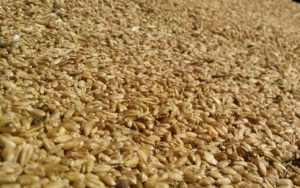Millet: 10 Reasons to Add this “Grain” to your Diet
By Karen Brennan, MSW, NC, Herbalist, BCHN ®
What is Millet?
It is a gluten free grain that is tiny in size and round and may be white, gray, yellow or red. Technically millet is a seed not a grain but it is categorized with grains from a culinary perspective. It is thought to have originated in North Africa and has been consumed since prehistoric times.
What are the Benefits to Eating Millet?
- Heart protective: The magnesium and fiber content is what makes this such as heart healthy grain. Since it also contains potassium it can aid in reducing high blood pressure.
- Lowers your cancer, heart disease and type 2 diabetes risk: Adding WHOLE grains (not processed grains) such as millet into your diet has been shown to lower your risk for certain cancers and heart disease and reduce your risk for type 2 diabetes.
- Fiber content: Millet contains insoluble fiber which can help prevent gallstones. The fiber content is also protective against breast cancer. Eating fiber rich grains also lowers the incidence of colon cancer. Fiber in millet is ideal for lowering your LDL (your “bad” cholesterol).
- Protective against childhood asthma: This is also due to the magnesium content. Studies have shown that children consuming a diet of whole grains (and fish) have lower incidence of asthma.
- Nutrient Dense: Millet is a good source of protein, copper, manganese, phosphorus, B vitamins and magnesium. One cup of cooked millet contains 6 protein grams, 41 carb grams 2.26 fiber grams, 1.74 fat grams and 207 calories. Of all the cereal grains, millet has the richest amino acid profile and the highest iron content.
- The magnesium content is also beneficial for migraines and high blood pressure
- Contains plant lignans: These are converted by healthy gut flora in our intestines into mammalian lignans which is thought to protect against breast cancer and other hormone related cancers and heart disease.
- Can improve digestive health: Because of its fiber content, millet can aid with elimination and constipation as well as excess gas, bloating and cramping. It is the easiest of all the grains to digest due to its high alkaline ash content.
- Can aid with detoxification: Millet is rich in antioxidants which are beneficial in neutralizing free radicals.
- Helps to fight fatigue: It is considered among the top foods to eat to fight fatigue due to its B vitamin, iron and macro nutrient content.
How Do I Cook with Millet?
Basic cooking method
- Before you use your millet grain you should rinse it under running water to remove any remaining left over dirt and debris.
- After rinsing, you can cook it as one part millet to two parts liquid such as water or broth. After it boils, reduce the heat to low and cover and simmer for roughly 25 minutes. The texture cooked this way will be fluffy like rice. If you want a creamier millet, then stir it frequently and add a little more water to it every now and then.
- If you want a nuttier flavor, then you can roast the grains prior to boiling. Place the grains in a dry skillet over medium heat and stir frequently. When the millet has a golden color then remove from the skillet and add to the water.
Simple Serving Suggestions
- Use as you would quinoa to make a grain/veggie/protein bowl. Add raw or cooked vegetables (use left- over veggies from last night’s dinner) and add a protein such as tempeh, chicken or fish. Toss it with a homemade dressing and you have a simple meal to take to work for lunch!
- Use with your meal instead of potatoes or rice as your starch
- Use ground millet in bread and muffin recipes
- Add cooked millet to your soups
- Combine cooked millet with chopped vegetables, GF bread crumbs, eggs and seasonings. Form into patties and bake at 350 degrees F. until done.
Buying and Storing your Millet
- When not using your millet, store it in your pantry, in a cool and dark place and it will keep for several months.
- You can also store it in your refrigerator. (I store mine in a mason jar in the fridge)
- If your millet has a harsh aftertaste, this means it is rancid and you should discard it.
- It’s shelf life is not as stable as some other grains so do not purchase this one in bulk.
- I recommend purchasing your millet from small companies. In CO you can purchase your millet from CJ Milling www.cjmilling.com. If you don’t have a local source then opt to purchase millet from the refrigerator section of your natural grocery store.
How Do I use Millet Flour?
- Millet flour has a distinct sweet flavor. Purchase in small amounts since it can turn bitter rapidly. If you purchase from a small local company, ask how fresh the flour is. You can also grind your own millet into flour in a high- power blender. Store the flour in the freezer to maintain freshness.
What Else Should I know about Millet?
- Millet contains goitrogen, which is a substance that can interfere with thyroid hormone manufacture. Thus, if you have a thyroid issue, just don’t eat millet every day. But still feel free to consume it in moderation.
- Although it is a gluten free grain/seed, those with celiac disease should start off with a small amount to see if they tolerate it. This is because millet does contain prolamines that are similar to the alpha-gliadin of wheat. That being said, millet is usually well tolerated by those with celiac disease.
- Millet is a GMO free grain and is not sprayed according to Jennifer at CJ Milling in CO. She stated that millet is a very safe grain to grow even conventionally since it is not a GMO nor sprayed crop. You may see organic millet in your store-this is where you save your money and buy this grain/seed non organic.
Sources
Murray, M. (2005) The Encyclopedia of Healing Foods. NY: Atria Books
Rogers, J. (1991) The Healing Foods Cookbook. PA: Rodale Press.
Wood, R. (2010) The New Whole Foods Encyclopedia. NY: Penguin Press
http://www.Whfoods.com/genpage.php?tname=foodspice&dbid=53
If you are sick and tired of feeling sick, tired, fatigued, depressed, anxious and more and have given up hope then Karen’s simple, effective, individualized and sustainable approach may be what you need. Call today at 303-522-0381
Karen Brennan, MSW, CNC, Board Certified in Holistic Nutrition and Herbalist is the author of Tru Foods Depression Free Nutrition Guide; How Food Supplements and herbs can be used to lift your mood and owner of Tru Foods Nutrition Services, LLC.
For more information visit www.trufoodsnutrition.com
Get her Food Swap Guide here to get started on your health journey today!



Leave A Comment
You must be logged in to post a comment.